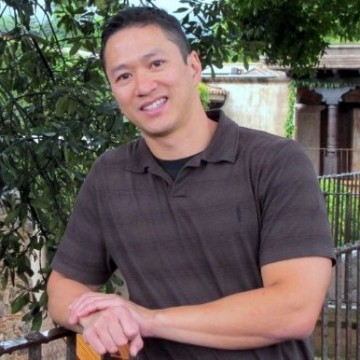The words of U.S. President John F. Kennedy inspire many of us to this very day. I wasn’t born yet, but in 1962, he said in a speech at Rice University, “We choose to to go to the moon in this decade and the other things, not because they are easy, but because they are hard, because that goal will serve to organize and measure the best of our energies and skills, because that challenge is one that we are willing to accept, one we are unwilling to postpone, and one we intend to win, and the others, too.”
The Citrix Innovation Hub turned four this year, and, each year, it builds upon the technological experiences of the last. There has been no shortage of energies and skills that bring the Hub to life!

In our world, every invention or solution is fraught with challenges, particularly those advancing us toward the future of work. Those visions of the future of work don’t come easy, there are little or no guides, and they’re limited by resources yet have no end in sight. Regardless, we choose to accept, to rise, and to succeed because “And te tide and te timeþat tu iboren were, schal beon iblescet,” or put simply, time waits for no one.
I ask myself the same question every year: What defines the future of work? Four years ago, we showcased experiential workflows. Last year, we culminated with day-in-the-life journeys. So, how do we even start to define the future of work?
We’ll begin with a single word: workspace. Easy, right? But workspace can have different meanings.
- In the past, the workspace was where we work. It was defined by the address, building, floor, office, or desk.
- Today, the workspace is becoming how we work. It is defined by creating the digital workspace, organizing and guiding work, keeping mobile workers engaged, and putting the right technology in place.
- Tomorrow, the workspace will be about who is working. It will be defined by the workforce — their identity, their context, their preferences, their workflow, their interactions.
We often think of identity in terms of access controls, preferences in terms of user profiles, and workflow in terms of task automation. This leaves out the critical who aspect of work. Who is a human being, defined as having “a more highly developed brain and a resultant capacity for articulate speech and abstract reasoning … hands for use as manipulative members.” A major theme of the Citrix Innovation Hub this year was re-envisioning these solutions in the context of what makes us human (or as Steve Wilson, Citrix VP for Cloud, describes it, the Dawn of the 4th Gen User Interface).
The demos below leverage our sensory organs and human behaviors to communicate, trigger, and produce action — mapping/wayfinding, contextual workspaces, dynamic privacy, improvised conferencing, and workforce wellness.
Citrix Workspace App with Mapping from Spreo
As we move to more mobile and flexible ways of working, locating people and resources becomes a greater challenge. This demo shows the integration of mapping and wayfinding capabilities of Spreo into the Citrix Workspace app. A user can navigate the maps using natural hand gestures.
A Contextual Workspace
Just as individuals are unique, so are their identity and behavior. Our contextual Workspace demo integrates voice interfaces, biometrics, context, and personalization to uniquely identify the individual and to customize their Citrix Workspace as well as their physical environment, enabling instant productivity. As part of this demo at Synergy, James Bulpin and Alexandr Smelov added the ability to automatically customize height-adjustable desks based on the user’s context and work preference. Stay tuned for a blog exploring this demo.
Citrix Camera Casting
Humans are extremely social, but our physical reach is restricted by our surroundings. The mobile phone breaks those chains as a communication device while imposing new barriers. “Social clubs” or video apps like Skype, Slack, or GoToMeeting limit who can join. The demo below shows how Citrix Camera Casting can free people from the bonds of apps, enabling anyone to simply join the club with a published QR code.
Dynamic Privacy Filter
We’ve all seen privacy filters in front of displays, at the bank, the airport, or on an airplane. They reduce the angle of light emitted by the display, essentially requiring viewers to center themselves for an optimal view. It’s a semi-effective, passive tool that is defeasible. By leveraging the viewers’ eye movements and natural reading/referencing patterns, we impose a randomization obstacle for any would-be spy.
Resources and Analytics
What represents companies’ most valuable resources? It’s not what, but who. Dashboards present critical data and alert managers to help users identify anomalies. However, fine details or infrequent spikes may even elude the most studious analyst because of absence, fatigue, or distractions.
In this demo, we envisioned how Citrix Analytics service could monitor resource trends and utilization of people, desks, spaces, and wellness — tracking sensors for presence, position, facilities, and biometrics. Spikes and anomalies as single occurrences are unlikely to present risks, but historical patterns of spikes and anomalies warrant further investigation. Combined with artificial intelligence, this dashboard could have the ability to remediate situations like contract or expand DaaS subscriptions based on utilization; alert or suspend user accounts based on suspicious behavior; or flag or notify EMS of impending health alerts.

We’re excited about what the future has in store. When it comes to the workspace, Citrix doesn’t just think about it. We do something about it! Citrix Workspace is the future of work. And when it comes to the future of work, the moon is within reach.




